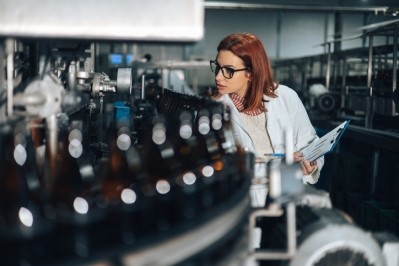How next-generation refrigerants hope to fight climate change

We know that food waste is bad news for both business profits and the environment. Food manufacturers, suppliers and retailers are therefore keen to find solutions that can prevent food from becoming waste. There are various methods, including composting; investing in good packaging; employing waste management services; and ensuring logistics and machinery operate at maximum efficiency.
Refrigeration and insulation technology is another area, but where a balance act is needed. While inefficient cold chains can lead to food waste, refrigerant gases such as hydrofluorocarbons used in cold chains are responsible for high greenhouse gas emissions.
The good news is that low-global warming potential (GWP) hydrofluoroolefins (HFOs) which operate at lower pressures than carbon dioxide systems are replacing high-GWP hydrofluorocarbon refrigerants.
“According to the United Nations, approximately 14 percent of food production is lost between harvest and retail, while 17 percent is wasted overall. There are refrigeration and insulation technologies available today that are reliable and can help prevent this,” said Lee Hermitage, Strategy & Marketing Director, EMEA, Honeywell Advanced Materials.
Honeywell predicted the growing need for lower-GWP solutions to combat climate change over a decade ago, he claimed. It has since invested more than one billion dollars in research, development and new capacity for its HFO technology, sold under the brand name Solstice.
These products can help to reduce carbon footprint and maximise energy efficiency across the food cold chain without compromising end-product performance and safety, the company claimed.
“The transition to low-GWP HFOs will help better support functioning throughout the cold chain, ensuring a safe supply of fresh and frozen foods, which will help to limit food loss and waste for consumers worldwide,” Hermitage told us.
“In the event of a failure, lower pressure systems would leak more slowly. Albeit at a lower performance, the system can continue to be operated until the leak is repaired, so most of the food can be kept refrigerated with reduced food waste.
“Additionally, trained technicians are more available for HFO systems, which means that maintenance and repairs can be carried out more quickly, again reducing food waste. This is especially the case in extreme heat conditions as seen in the recent Southern Europe heat wave where failure rates on CO2 systems can increase significantly.”
Honeywell’s HFO materials have various applications. For example, Abu Dhabi-based agritech company Pure Harvest – which is hydroponically growing crops in desert environments in the UAE, Saudi Arabia and in Kuwait – is using a Honeywell HFO refrigerant to control the environment and reduce carbon emissions in its greenhouses. The product has a GWP of less than obe, which is 99% below the GWP of hydrofluorocarbon refrigerants it is designed to replace, the company claimed.
Honeywell also recently struck a deal with the French retailer E.Leclerc in Moissac, which is using an HFO refrigerant as a ‘long-term, future-proof solution’ for it cold room storage.
“Next-generation refrigerants will help advance E.Leclerc in Moissac’s environmental transformations and reduce its energy bills without sacrificing performance,” Honeywell declared.
Employing insulation technology to enable climate controlled transport
Honeywell’s insulated panels and board-stocks, meanwhile, are being used in in refrigerated containers or in refrigerated trucks during the transport stage to keep cargo fresh or frozen using less energy. The company claims refrigerated containers, used by the likes of Dutch container manufacturing specialist Unit45 and insulated with polyurethane foam formulated with an HFO refrigerant have reduced environmental impact.
“HFOs play a critical role along the entire food cold chain,” said Hermitage. “So far, use of Honeywell Solstice technology has helped avoid the potential release of the equivalent of more than 326 million metric tons of carbon dioxide into the atmosphere, equal to the carbon emissions from nearly 70 million gasoline-powered passenger vehicles per year.”
The challenge of plastic waste
Honeywell has also developed what it called advanced plastics recycling technology, which it claimed can increase by three times the amount of plastics that can be recycled.
The new technology, it said, can reduce the need for fossil fuels in the creation of virgin plastics while enabling hundreds of cycles of recycling, with the goal of enabling a circular economy for plastics.
“Honeywell’s UpCycle Process Technology is an innovative recycling solution that expands the kinds of plastics that can be converted into recycled polymer feedstock (RPF),” explained Marc Yagoub, Global Business Director, Plastics Circularity for Honeywell UOP.
This means that existing infrastructures can become closed-loop systems, reducing plastic waste while still meeting demands for virgin quality plastic that can be produced by RPF.
“The UpCycle process also means that plastic waste doesn’t end up in landfill or incineration and the amount of fossil fuel-based feedstock used in the production of plastics is significantly reduced. When the Honeywell UpCycle Process Technology processes waste plastic into circular plastic feedstock, it can achieve an 80% reduction in carbon emissions if the plant is supplied with 100% renewable electricity.”
The that only around 9% of plastic is properly recycled worldwide, emphasises the need for a closed-loop system for plastic manufacture, he stressed.
“When used in conjunction with other chemical and mechanical recycling processes – along with improvements to collection and sorting – Honeywell's UpCycle Process Technology has the potential to help recycle nearly 90% of waste plastics. This would represent a considerable increase in the amount of waste plastics that can be turned into polymer feedstock. This emphasizes the valuable and important work that can be done through innovative moves toward the circular economy.”















